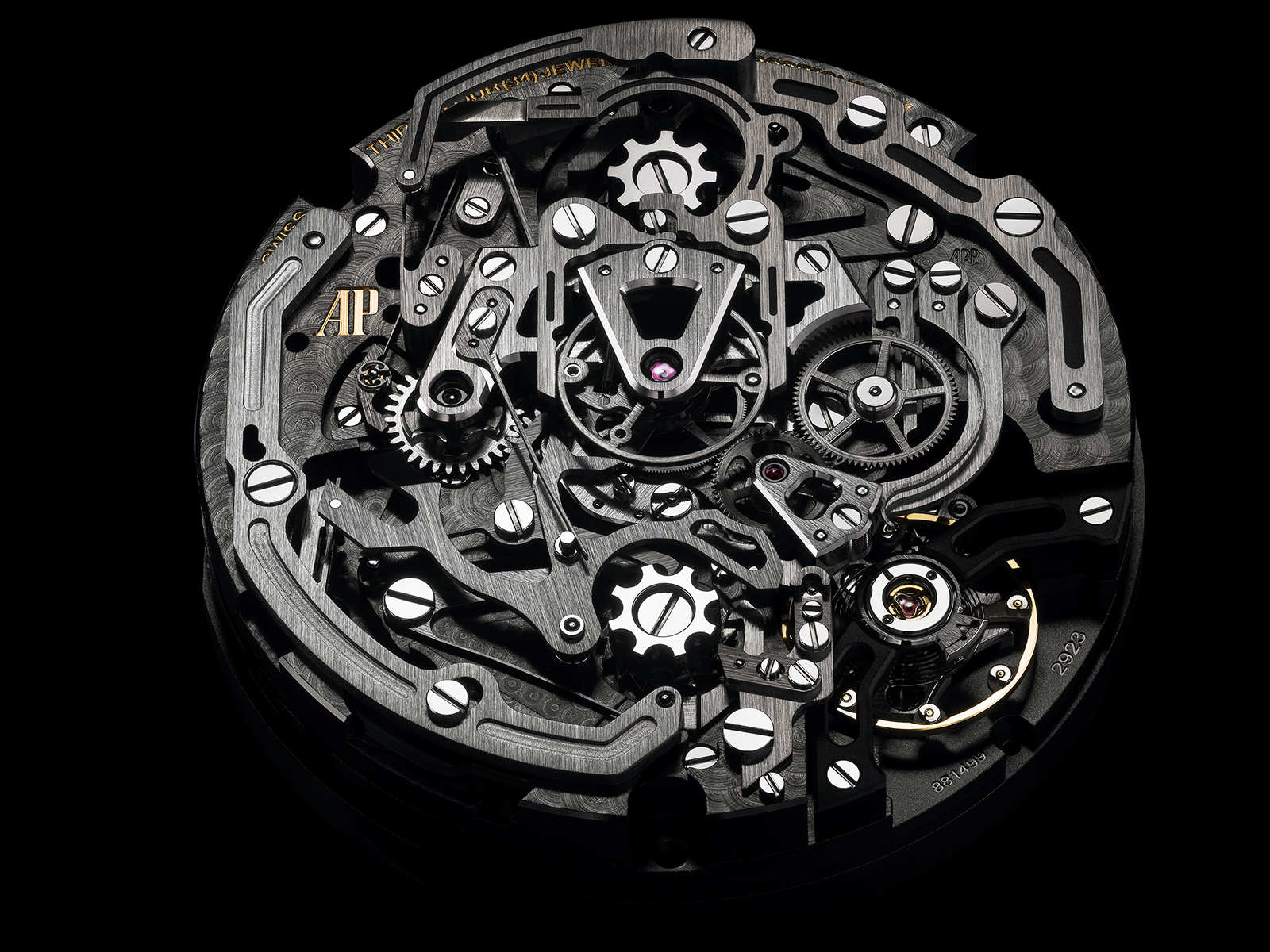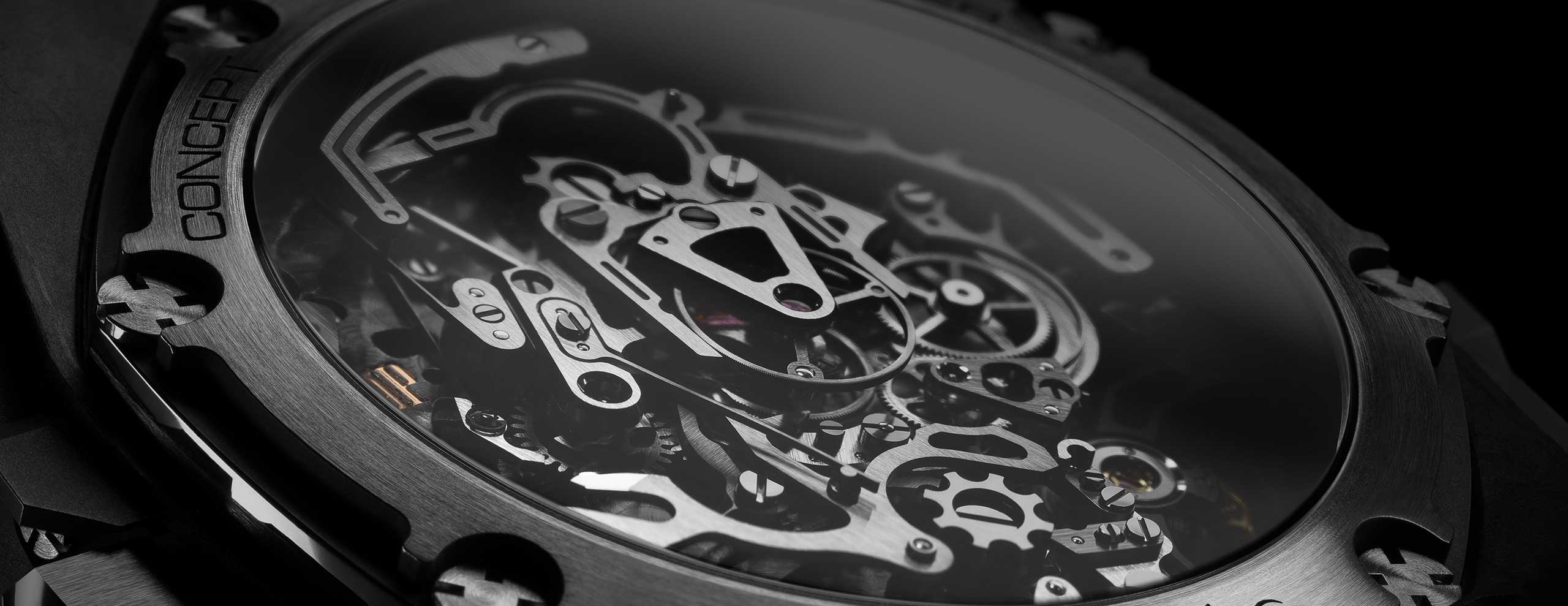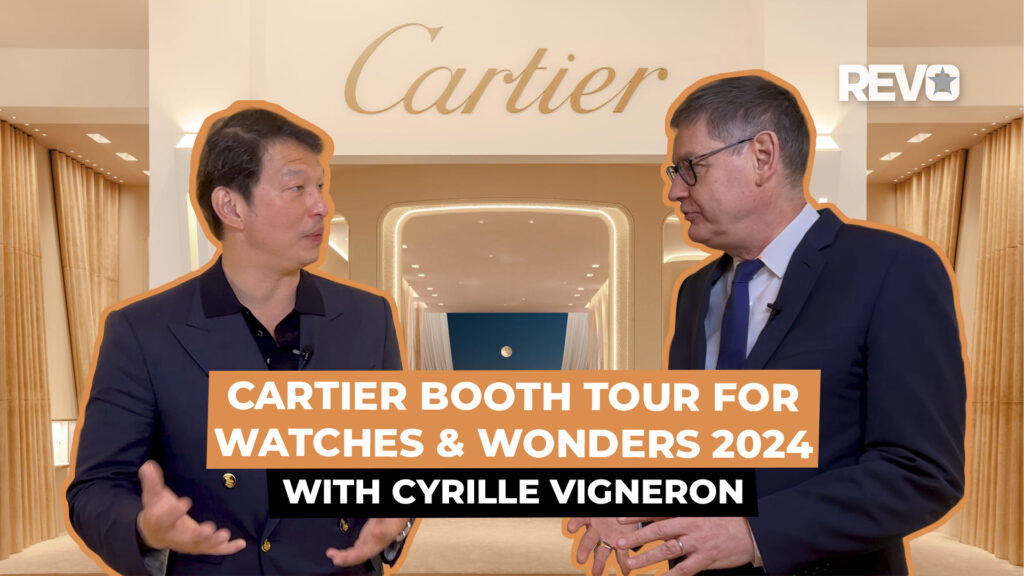In the lead-up to the Formula 1 weekend, we look back at five groundbreaking chronographs.
In the past two decades, the field of chronographs has witnessed a multitude of innovations. These advancements have spanned from completely reimagining traditional chronograph design to tackling the fundamental challenge that has long haunted them: the erratic seconds hand movement. However, in the spirit of Formula 1, we look back at chronographs that have boldly pushed the boundaries of what this timekeeping instrument can do. While some have faded from the present, they have left an indelible mark on history and are excellent examples of a brand pushing beyond the ambit of their core business and breaking new ground for the purpose of enhancing functionality.
Audemars Piguet Royal Oak Concept Laptimer Michael Schumacher
The Audemars Piguet Royal Oak Concept Laptimer Michael Schumacher in 2015 was a groundbreaking introduction being the first chronograph that was designed for the express purpose of recording lap times. What made it truly exceptional was its use of a single gear train that drove two co-axially mounted central chronograph hands, which demanded an immensely complex setup. A conventional pusher at two o’clock starts and stops the chronograph and a pusher at four o’clock resets the chronograph hand back to zero, as with a standard chronograph. However, a third pusher at nine o’clock can stop one hand while restarting the other instantaneously, and each time this pusher is pressed subsequently, it inverts the states of each hand. But to keep one lap time as a reference throughout, pressing the pusher at four o’clock (instead of the laptime pusher) restarts the other chronograph hand while preserving the position of the first chronograph hand.
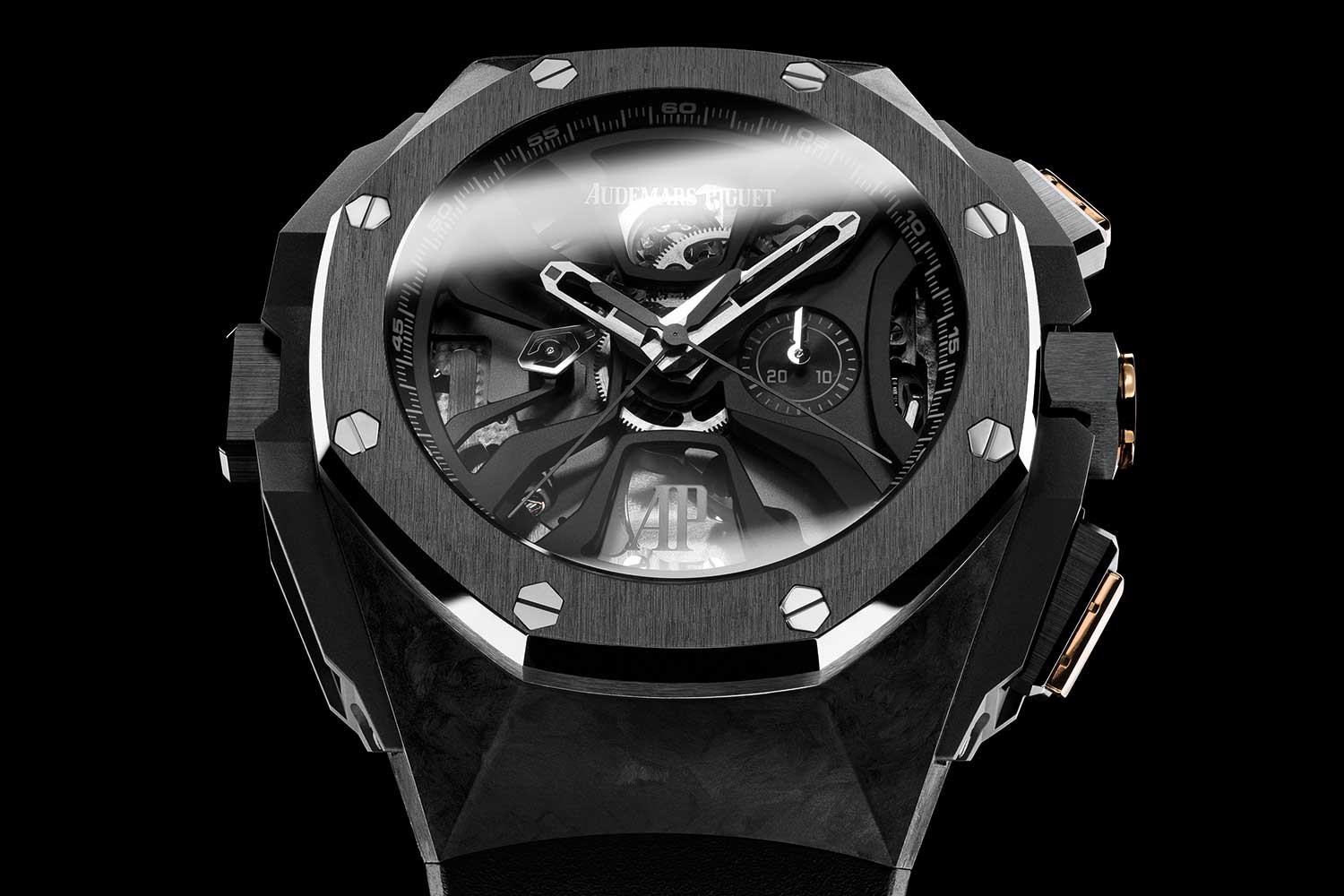
Audemars Piguet Royal Oak Concept Laptimer Michael Schumacher
A standard split seconds mechanism with its column wheel and clamps can only immobilize one wheel, and the same wheel with its corresponding hand each time. Thus, the Laptimer which requires stopping either the first or second hands, depending on circumstances, necessitates two alternating rattrapante mechanisms, each controlled by its own column wheel (of which one is located on the dial side), along with a third column wheel for the basic chronograph function. The entire mechanism is exceedingly complex and the reason why APRP is one of the greatest complication specialists in history.
A. Lange & Söhne Double Split
Regardless of how much time has elapsed, the Double Split launched in 2004 and the Triple Split that followed more than a decade later continue to be chronographs that make hearts beat a little faster just at the thought of the level of sophistication in engineering that underpins these new abilities.
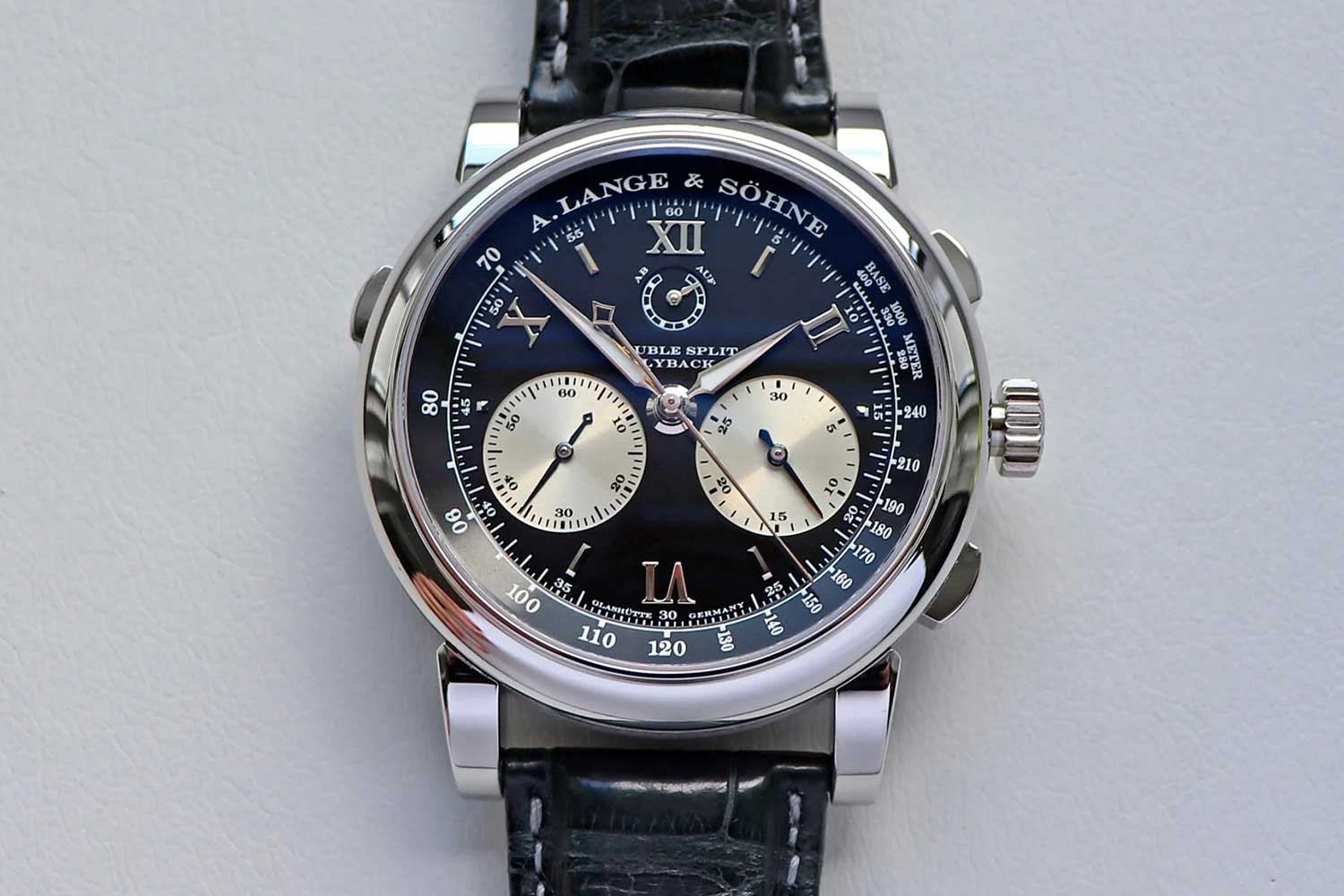
A. Lange & Söhne Double Split
The splitting of time works whereby when the split seconds wheel is captured by the clamps, a spring linked to the clamps stops the split minute wheel and in the triple split, a braking lever stops the split hour wheel. Furthermore, they incorporate not one but two isolators, one dedicated to the seconds and another for the minutes. This eliminates friction caused by the split reset hammers dragging over their respective heart cams when the split is activated and ensures a stable balance amplitude. Apart from being able to split times more than a minute apart (hours for the Triple Split), they are also flyback chronographs with an instantaneous jumping minutes. For both their astounding abilities and their mechanical completeness, they represent the most singular chronographs in watchmaking.
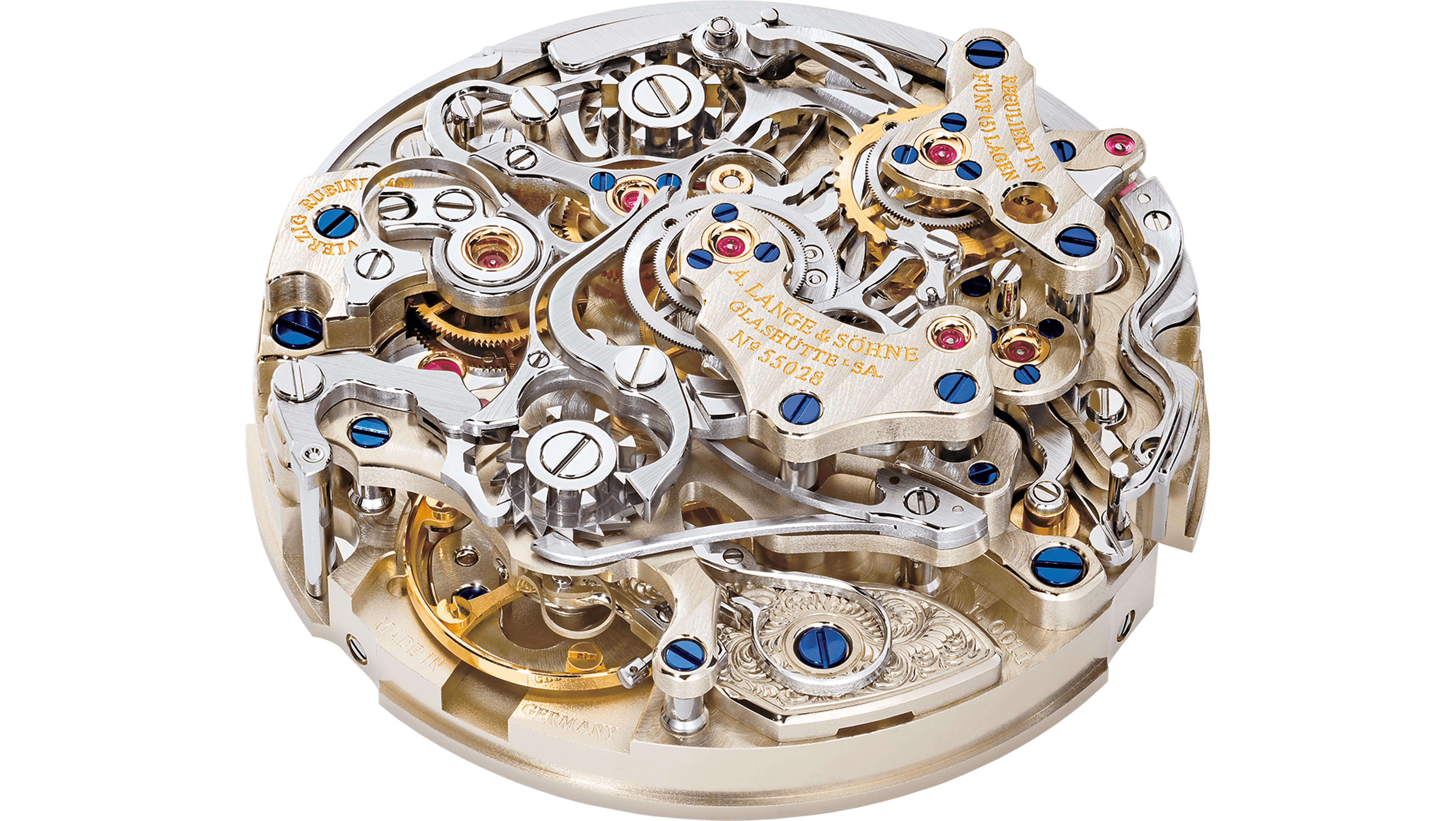
The Double Split Caliber L001.1
Zenith El Primero Defy 21 and its ilk
The Zenith El Primero Defy 21 is presently the only chronograph on the market with a 50Hz balance, making it a true 1/100th of a second chronograph. This is accomplished by employing dual barrels, gear trains and oscillators, ensuring that the chronograph operates independently from the timekeeping mechanism and does not impact amplitude or power reserve.
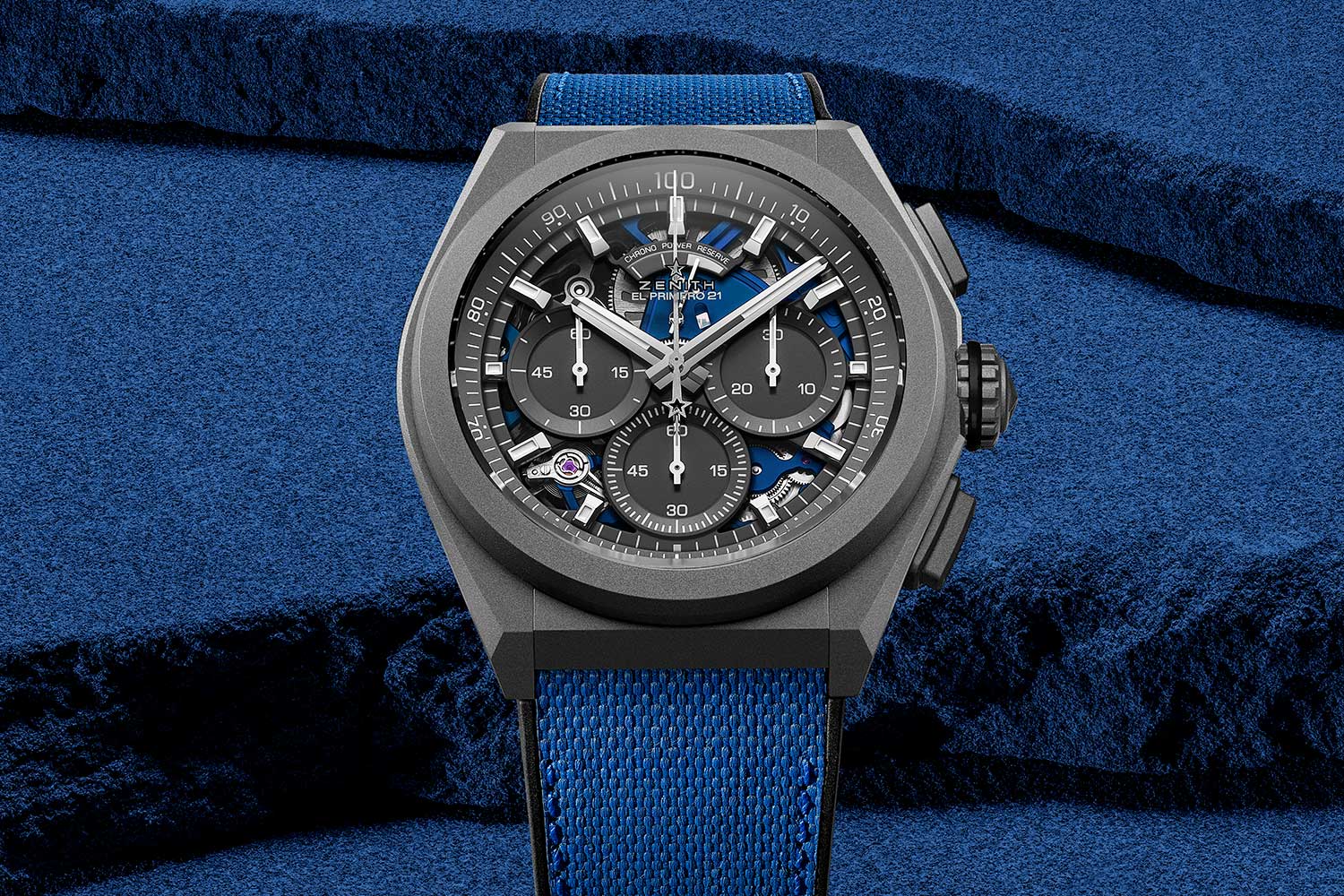
Zenith Defy 21 Ultrablue
This movement was adapted from the TAG Heuer Mikrograph, which is just one of the many high-frequency chronographs developed by Guy Sémon. In 2011, he created the Mikrotimer Flying 1000, the world’s first chronograph capable of timing intervals as short as one thousandth of a second. It relies on the same dual train architecture but does away the balance wheel entirely. Instead, it uses a short hairspring made of a highly rigid alloy along with a patented launcher and hub system that is able to propel the radial escapement when the chronograph is activated and also brake the spring when the chronograph is stopped. A year later, it was followed by the Mikrogirder which is capable of measuring intervals as small as 1/2000th of a second. Instead of using a spiral hairspring, a vibrating blade spring was used to maintain stable oscillations at an astounding frequency of 1,000 Hz.
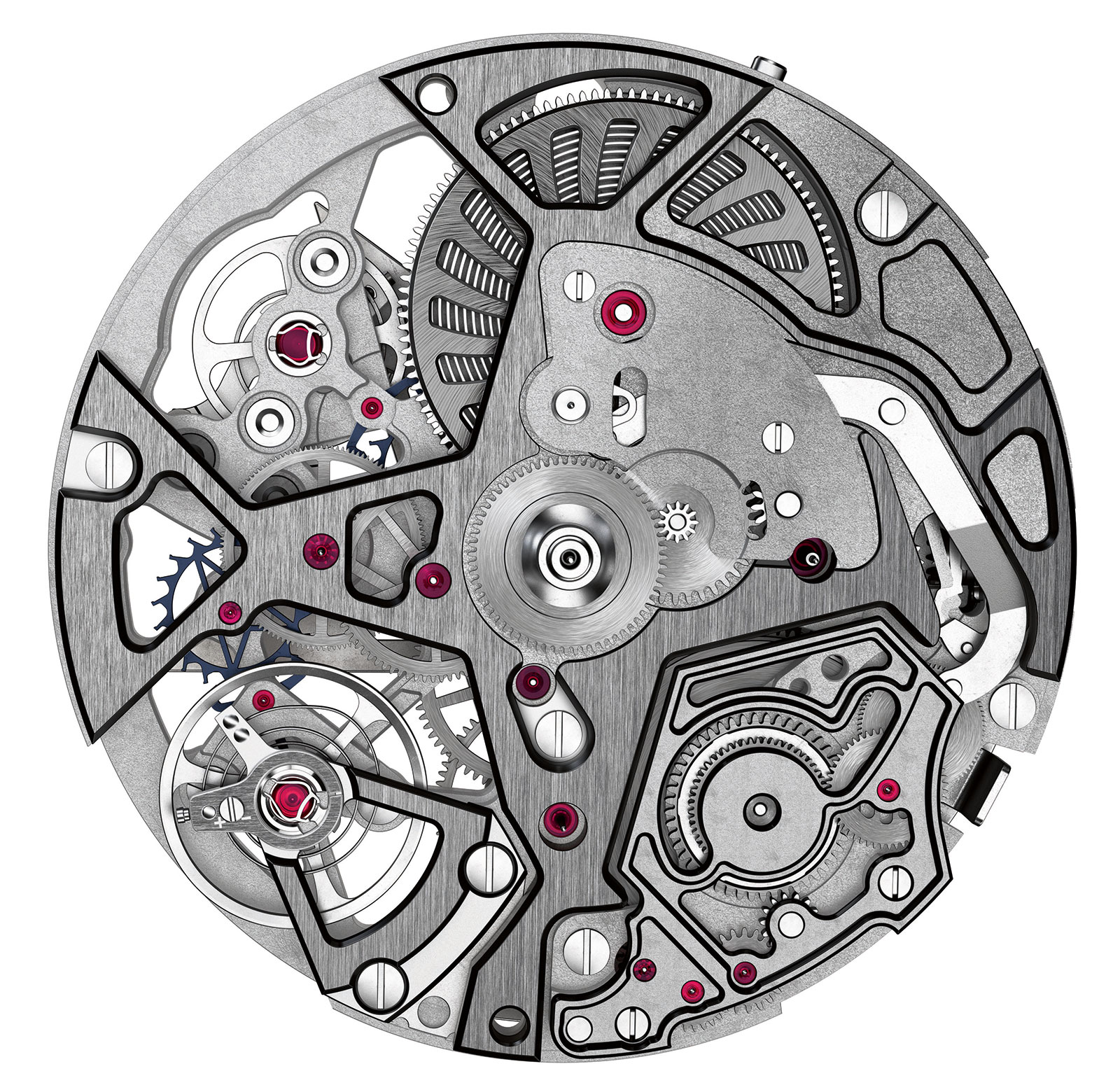
The El Primero 9004 with a clutchless, dual train architecture
MB&F Legacy Machine Sequential Chronograph EVO
One of the most astounding chronographs in recent years is the MB&F Legacy Machine Sequential EVO. It brings something new to the table while addressing the fundamental shortcomings of a vertical clutch system. The watch is equipped with two mainsprings, two gear trains and two chronograph mechanisms where the fourth wheels of each gear train are integrated in the vertical clutch assembly, allowing them to drive the chronograph seconds hand directly. Vertical clutch chronographs with a direct drive are rarer than we might realize, especially in modern movements where the slimness is a priority. When an auxiliary train is needed to drive the chronograph seconds, it reintroduces the very problem that a vertical clutch system was designed to eradicate in the first place, which is backlash and the potential for seconds hand stutter. The Sequential EVO essentially realizes the true merits of a vertical clutch system and goes even further by installing two jewel bearings on the shaft of the fourth wheel. This serves to eliminate friction, preventing amplitude loss when the chronograph is not in use and the fourth wheel shaft is left rotating on its own against the shaft of the vertical clutch.
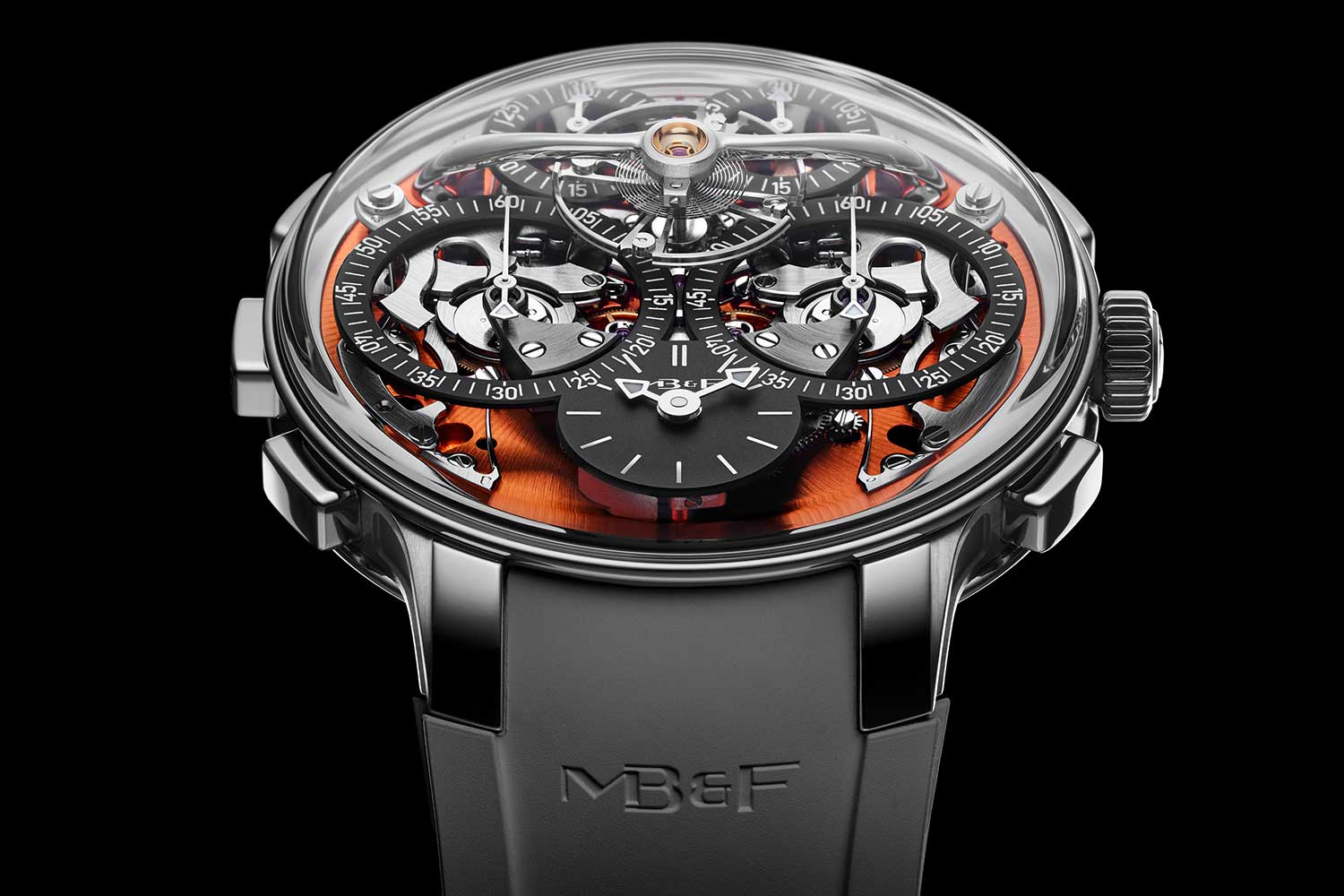
MB&F Legacy Machine Sequential Chronograph EVO
But the most innovative aspect of the watch is the Twinverter system that can invert the modes of each chronograph, notably, allowing it to function as a lap timer. While both chronographs can be started and stopped independently using their respective pushers on either side of the case, the Twinverter pusher at nine o’clock, through a system of levers, advances the column wheel a notch forward, effectively switching their present states. This means that if one chronograph is running while the other is not, the Twinverter will halt the active one and activate the idle one, enabling the measurement of individual lap times without interruption. Taken all together, the Sequential EVO is a notably complete modern chronograph, and one that is producible and looks out of this world.
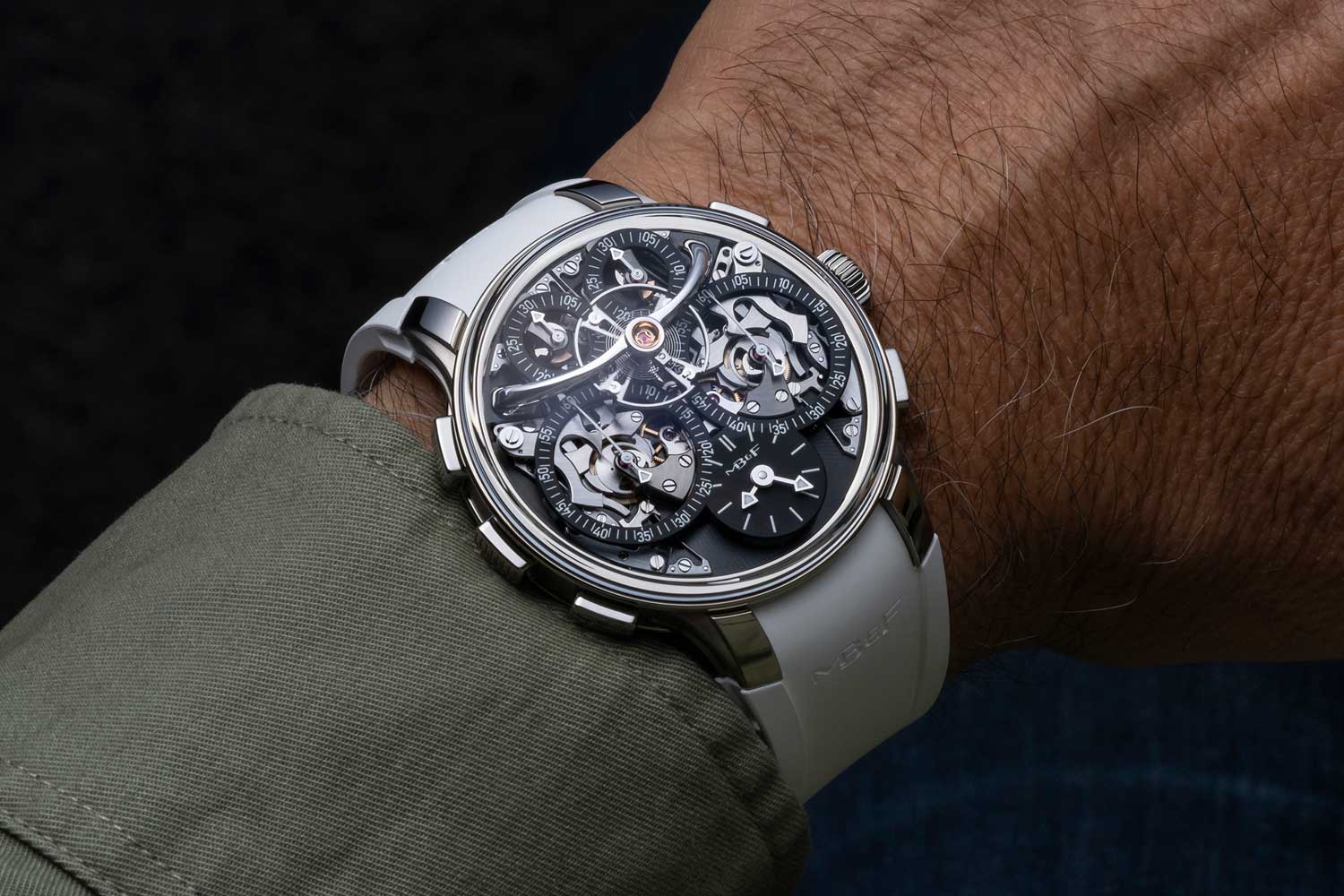
MB&F Legacy Machine Sequential EVO in coal black dial
Patek Philippe Ref. 5470 1/10th of a Second Chronograph
While high frequency, foudroyante chronographs are a well-trodden territory, the Patek Philippe 5470P 1/10th of a Second Chronograph represents the most sophisticated and holistic approach seen in watchmaking. It demonstrates, with much irony, that there is no fast track to speed; that simply installing an additional, faster hand involves a multitude of solutions to ensure reliability, security, efficiency, precision while maintaining mechanical integrity and display readability.
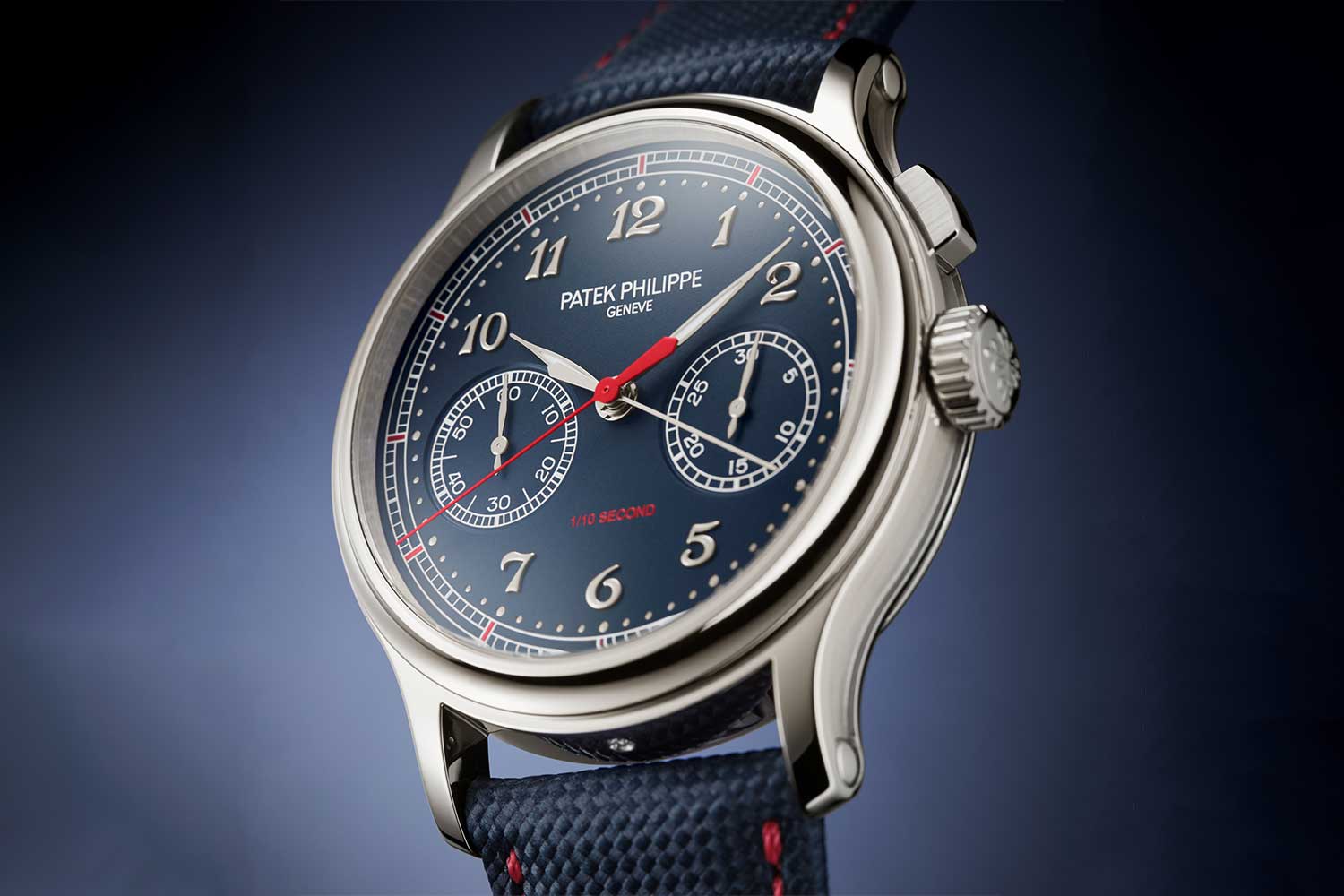
Patek Philippe Ref. 5470 1/10th of a Second Chronograph
The 5470P measures and marks whole seconds as well as tenths of a seconds with a pair of central chronograph hands. Patek not only retained the mechanical integrity of a horizontal clutch system where both chronograph mechanisms are driven off the fourth wheel (not the escape wheel nor with two gear trains), but also followed through with an obsessive degree of technical solutions to address every drawback imaginable in such a construction. Most notably, it implemented a reactive LIGA- fabricated drive wheel in the 1/10th of a second mechanism to reduce backlash, fortified the base chronograph mechanism by adding a hook that would latch the clutch lever onto the column wheel, and developed a highly sophisticated tenths-of-a second clutch system with two antishock levers that are specifically engineered such that they keep the clutch wheel more firmly pressed against the central 1/10th second pinion in the event of shock. Further, the entire silicon-based Oscillomax assortment was deployed for energy efficiency. While it may be Patek Philippe’s first-ever high-beat chronograph, it is, in the broader context, the most thorough exercise in high frequency chronographs to date.
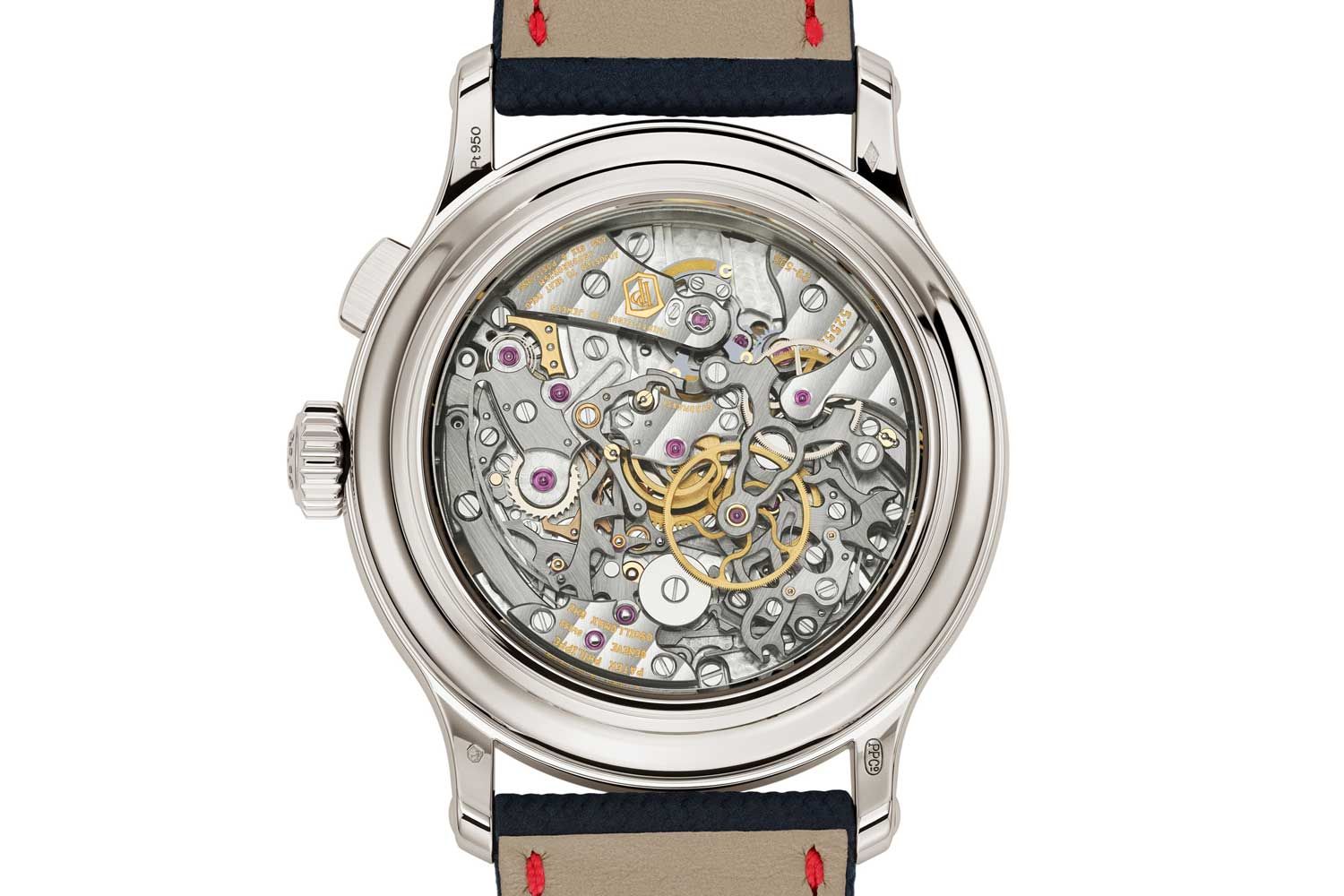
The Caliber CH 29-535 PS 1/10

